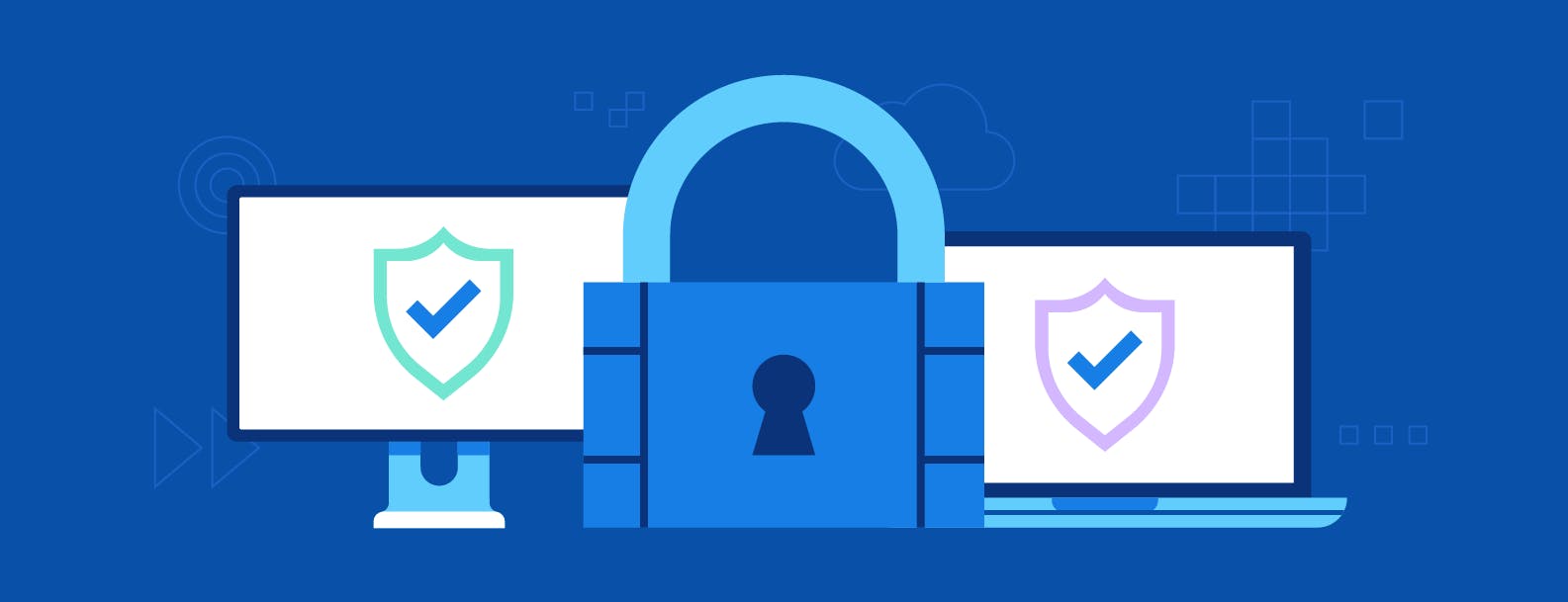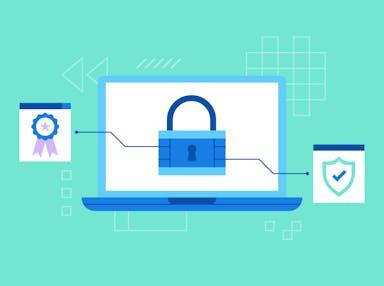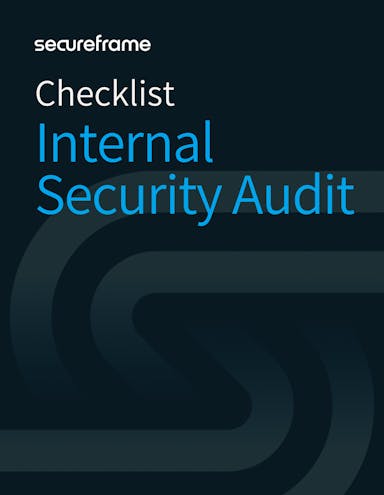
8 Ways to Improve Your Security Posture & How You Assess It
Anna Fitzgerald
Senior Content Marketing Manager
Rob Gutierrez
Senior Cybersecurity and Compliance Manager, CISA, CCSK, CMMC RP
Weekly cyber attacks hit an all-time high of 1,876 in the third quarter of 2024, marking a staggering 75% year-over-year increase.
From complex phishing and ransomware attacks to simple misconfigurations, cyber threats are everywhere. As attacks continue to increase and evolve, your organization must have a clear picture of exactly how well-protected your ecosystem is.
One way to do that is by evaluating your company’s cybersecurity posture. A strong posture is a great first line of defense for keeping your organization safe against known and unknown risks. If you're ready to see where your organization stands, dig into how to assess and improve your security posture below.
What is security posture?
Security posture is a measure of an organization’s overall security status. This includes the security status of its networks, information, and systems based on the information security resources (such as security policies, security teams, software, and hardware) and capabilities it has put in place to defend itself and to react as the situation changes.
You can think of security posture as an umbrella term that covers a long list of security controls including:
- Information security (InfoSec)
- Data security
- Network security and firewalls
- Penetration testing
- Security awareness training
- Vendor risk management
- Vulnerability management
- Cybersecurity remediation
- Data breach prevention
- Incident response plans
- Access management and authentication
- Security automation and AI
Types of security posture
Security posture is a broad term that encompasses several specific subtypes, each focusing on a different aspect of an organization’s cybersecurity strategy. Let's define these subtypes below.
Cloud security posture
Cloud security posture focuses on the security measures and configurations in place to protect cloud environments specifically. This includes ensuring compliance with cloud security frameworks, managing access controls, monitoring cloud resources for vulnerabilities, and implementing security automation to detect and mitigate threats in real-time.
A strong cloud security posture helps ensure that cloud assets are safeguarded against threats, misconfigurations are minimized, and compliance requirements are consistently met.
Data security posture
Data security posture refers to an organization’s ability to protect sensitive data from unauthorized access, loss, or corruption. It includes encryption, data classification, access controls, and policies to safeguard data both in transit and at rest.
A strong data security posture helps mitigate risks associated with data breaches and regulatory non-compliance.
Identity security posture
Identity security posture refers to an organization’s ability to manage and secure user identities, credentials, and access privileges. This includes implementing identity and access management (IAM) solutions, enforcing multi-factor authentication (MFA), monitoring for compromised credentials, and ensuring that users have the appropriate level of access based on their roles.
A strong identity security posture minimizes the risk of unauthorized access and insider threats.
Security posture vs security compliance
Security posture and security compliance work hand in hand, but they aren’t the same. Security compliance refers to the measures an organization puts in place to meet contractual or regulatory requirements. Security posture more broadly refers to the protective measures an organization puts in place to protect its IT assets, data, and customers.
So security compliance is more about following rules set by specific security frameworks and regulations, while security posture is about an organization’s overall ability to protect itself against outside threats.
Why is having a strong security posture important?
A strong security posture helps organizations:
- Reduce the risk of cyberattacks and data breaches: Cybercriminals constantly look for vulnerabilities to exploit. Not having a solid security posture is like locking your doors but leaving your windows open: your company is vulnerable to both outside (and inside) threats. By implementing strong security controls, organizations can significantly reduce the likelihood of breaches and unauthorized access to sensitive data.
- Protect sensitive customer and business data: Organizations handle vast amounts of confidential information, including personal customer data and proprietary business information. A strong security posture safeguards this data from theft, leaks, and unauthorized access.
- Minimize financial and reputational damage from security incidents: A data breach or cyberattack can lead to costly financial repercussions, including legal fees, fines, and lost revenue. Additionally, a damaged reputation can erode customer trust and loyalty. Strong security measures help mitigate these risks.
- Improve overall business resilience and continuity: Cyber threats can disrupt business operations and lead to downtime. A well-established security posture ensures that organizations can quickly respond to and recover from incidents, maintaining smooth operations and minimizing losses.
- Maintain compliance with industry regulations and standards: Many industries have strict cybersecurity requirements, such as GDPR, HIPAA, and SOC 2® . A robust security posture helps ensure that organizations meet these regulatory requirements, avoiding fines and legal consequences.
Recommended reading

Essential Guide to Security Frameworks & 14 Examples
What is a security posture assessment?
A security posture assessment is an in-depth examination of a company’s internal and external security controls within one document. The assessment is typically conducted in four phases:
- Planning stage: A dedicated project manager will take on the responsibilities of scoping the security posture assessment, identifying goals, and coordinating a detailed process.
- Documentation review: The project manager will then gather documentation on internal and external security controls and processes to provide an overview of current security programs and practices.
- Assessments: The organization will then undergo assessments to test exposure areas. Depending on the bandwidth and experience of your internal team, you may decide to consult with an outside organization to conduct risk assessments, penetration testing, or a gap analysis to be sure all security areas have been assessed.
- Reporting: Once assessments have been completed, the organization will review findings with stakeholders and assess a security posture level. Any vulnerabilities highlighted from the findings will serve as a roadmap for prioritizing mitigation and fortifying overall security.
Once security posture has been evaluated, companies can see how effective their cybersecurity strategy is (or isn’t) and make improvements. This includes how well a company is able to identify, prevent, and respond to cyber threats as they evolve. Let's take a closer look at the importance of assessing your security posture.

Internal Security Audit Checklist
Use this comprehensive checklist to assess your security practices and identify areas for improvement.
Why are security posture assessments important?
Regular security posture assessments help organizations identify vulnerabilities, measure the effectiveness of security controls, and ensure compliance with industry standards. These assessments provide a clear understanding of an organization’s current security standing and highlight areas for improvement.
By conducting thorough evaluations, organizations can:
- Detect security gaps before attackers do. Identifying weaknesses proactively allows businesses to implement necessary security measures before they can be exploited by cybercriminals.
- Ensure compliance with regulations and frameworks. Many regulatory bodies require ongoing security assessments to meet compliance standards, reducing the risk of legal and financial penalties.
- Improve incident response preparedness. Assessments help organizations refine their incident response plans by identifying weaknesses in existing protocols and ensuring readiness for potential threats.
- Enhance overall cybersecurity resilience. A well-executed security posture assessment enables businesses to adapt to evolving threats and strengthen their defense mechanisms over time.
The challenges organizations must overcome when assessing and improving their security posture
A recent report by Panaseer identified several challenges organizations face in understanding and improving their security posture. According to incoming CISOs, the top challenges are:
- Getting a true picture of weaknesses in organizational security posture (49%)
- Understanding threat landscape (45%)
- Getting trusted data to enable strategic decisions (43%)
Underlying these challenges is a common theme: security leaders have low confidence in the accuracy of their security data and its ability to aid decision making and reduce business risk. In fact, only 36% of surveyed security leaders said they are totally confident in their security data and use it for all strategic decision making.
One reason for this lack of confidence is that the majority of organizations (79%) have been surprised by a security incident that evaded their controls. And organizations are worried that this will continue as threats evolve and their attack surface grows.
In a study by Noetic Cyber, 62% of respondents said they believe their attack surface has grown over the past two years and 50% agreed that the frequent changes and growth in the attack surface have made it difficult to keep track of and manage their security posture.
An attack surface is all possible entry points that cybercriminals, hackers, or any unauthorized users could exploit to gain access to a system. It grows for a number of reasons, including:
- Have increasing amounts of sensitive data to store
- Add new vendors or third-party service providers
- Increase the number of remote workers
- Increase use of IoT/OT devices
- Use more space on a public cloud
- Utilize new SaaS apps or services
- Have more users connecting to networks and applications
- Change their technology infrastructure as necessitated by privacy and security regulations
- Are not updating or patching vulnerabilities in a timely fashion
- Are not examining and validating user access rights on an ongoing basis
As a result of this increasing attack surface, 76% of organizations surveyed by Noetic Cyber said they experienced at least one cyber attack due to an unknown, unmanaged, or poorly managed internet-facing asset.
These challenges underscore the necessity of getting a true picture of your security posture in order to become more proactive in both your attack surface management and overall security strategy.
To help you overcome these challenges, we've provide resources and tips below to help you truly understand your security posture and improve it.
Security posture assessment resources
To help you better understand the security posture assessment process, we’ve compiled a list of resources and guides.
- NIST Cybersecurity Framework
- ISACA security posture assessment guide
- CIS risk and security posture assessment
- Secureframe’s internal security audit checklist
- CDW’s guide to cloud security posture
- Verizon’s security posture FAQ
We've created a flow chart to help you get a high-level check on how strong your security posture is, but every organization should also conduct a security posture assessment to finalize results.

8 strategies to improve your security posture and how you assess it
While each organization’s security approach is as unique as the data they protect, there are a few helpful tips we can offer as you begin assessing your organization’s security posture.
1. Create an asset inventory
Nearly three-quarters of IT and cybersecurity professionals (73%) admit that they only have strong awareness of less than 80% of all assets. And more than half of these professionals (56%) say they sometimes struggle to understand which assets are business-critical. These issues hamper an organization’s ability to manage their security posture and increase cyber risk.
You can solve these issues by creating an asset inventory. To start, catalog all data assets tied to your organization’s security posture. Consider both digital and physical data assets and those accessed by third parties.
When organizing data assets into an inventory, be sure to note what departments or individuals have access to each asset and determine whether that access is warranted. Also consider how assets are treated at each stage of its lifecycle, including disposal.
After all of these assets have been cataloged, you can then begin to rank them based on criticality. It’s also helpful to estimate the potential monetary impact of a breached data asset by calculating a dollar value.
You can complete this process manually — or use a platform like Secureframe, which will automatically create and update an asset inventory for you.
2. Rank and prioritize risks
There are many methods for ranking cybersecurity risks. One of the most popular is by using a risk matrix.
A risk matrix is a helpful tool to prescribe levels to the risks your organization faces. Risk matrices are made by comparing the likelihood that a potential risk might happen against the impact that your business faces should that risk occur.
For example, a high-priority risk would be an incoming hurricane that’s expected to cause power outages and disrupt business operations. The likelihood of this risk happening is high and the impact on business is critical.
Having a plan in place for what to do if a storm knocks out power ensures your team isn’t scrambling at the last minute. Your business is able to proactively let customers or vendors know of the potential outage and potentially deliver generators to keep operations running.
Prioritize the risks that pose the greatest threat and focus your team’s time and resources to minimize their impact.

3. Educate employees
A company’s least secure employee is one of its largest vulnerabilities. In fact, IBM reported that the average cost of a data breach caused by human error is $3.33 million.
One way to help mitigate data breaches caused by employee error is to effectively train them on security best practices. This should include training for all new employees during onboarding and continuous on-the-job training. Ideally, your training program should include interactive methods like quizzes, demonstrations, and staging physical security situations to make it more memorable.
Your business should also have a clear protocol in place for offboarding employees. This includes retrieving devices and revoking access to company email and servers.
4. Create an incident management plan
Once you’ve identified the biggest threats facing your business, it’s helpful to create a detailed plan for how to manage each risk.
These plans can then be stored in an incident response plan, which is a document that helps an organization return to normalcy as quickly as possible when a risk event occurs.
Your incident management plan should list clear roles and responsibilities for team members.
The plan should also include instructions on how to document the incident and what parties to notify, such as customers or the board of directors.
Once a threat has been eradicated and resolved, your team should do a post-op review of how effective the plan was, any potential improvements, and lessons learned to keep it from happening again.
An incident management plan can be a helpful way to assign roles to high-priority risks, which can help break down the daunting task of risk management into more manageable pieces.

5. Define and track metrics
Establishing and tracking metrics to assess your security posture can help you make the right adjustments over time.
Examples of metrics you might use are:
- Dwell time
- Number of known vulnerabilities
- Security awareness training completion rates
- Compliance reports earned
- Number of incidents
6. Automate processes where possible
Security hygiene and posture management has grown more complex and difficult over the years due to a range of factors, including a growing attack surface. This has led to an increase in organizations experiencing a cyber attack from an exposed asset. This upward trend is likely to continue as the majority of organizations continue to take a manual approach to security posture assessment and management across disparate point solutions.
The survey by Panaseer as well as a report by Ivanti includes important findings that highlight the manual nature of most organization’s approach and the challenges they face, including:
- Organizations spend 46% of their time manually collecting, formatting, and presenting security data in any given month.
- 75% of organizations say their lack of security skills, budget, and/or headcount impacts cyber risk mitigation, making them the principal factors negatively influencing security posture.
- Nearly 2 in 3 (63%) IT and security professionals report that siloed data slows security response times.
- 54% of IT and security professionals report that siloed data weakens their organization's security posture.
- 41% of IT and security professionals struggle to collaboratively manage cybersecurity.
- 67% of organizational leaders said getting a trusted view of security data across all tools and turning data into actionable insights were some of their top challenges
To solve these challenges and reduce the manual work and time required to assess and enhance their cybersecurity posture, organizations are investing in automation.
In fact, according to the Noetic Cyber survey, 91% of organizations have automated security hygiene and posture management activities, like continuous asset scanning and security testing, and an additional 7% are starting to do so.
Recommended reading

5 Hardest Things About Security Compliance and How Technology Can Help
7. Continuously test and monitor your security controls
After your initial security posture assessment has been completed, you’re not off the hook. Security compliance isn’t a one-and-done item to be crossed off a list — it should be an ongoing process.
You should be continually testing your security controls to proactively identify potential gaps. In addition to implementing continuous control monitoring, undergoing regular cybersecurity audits and internal audits will help evaluate weaknesses in your security controls and bolster your security posture over time.
Continuous monitoring can also help you detect, analyze, and respond to potential security threats and new vulnerabilities faster and easier so you maintain a strong security posture.
Recommended reading

The Benefits of Continuous Control Monitoring & How You Can Implement It
8. Implement a security and compliance automation tool
A security automation platform like Secureframe can significantly enhance your organization's security posture in several ways:
Risk management: The first step in building an effective security posture is understanding the unique risks your organization faces. Security automation platforms can integrate with your tech stack to effectively assess risks within your unique environment. You’ll be able to more effectively identify, prioritize, and treat risks and make informed decisions to build a stronger security program.
Vendor management: Third-party vendors pose significant risk, and managing that risk is a complex process. Security automation tools allow organizations to monitor and manage their vendor relationships in a single tool, making it easier to ensure vendor compliance, review due diligence and security reviews, complete vendor risk assessments, and keep sensitive data secure throughout your entire ecosystem.
Enhanced visibility into security posture: By integrating with your tech stack, security automation solutions allow organizations to view their current control status and get an accurate, up-to-date picture of their security posture. They can also quickly fix any failing controls or misconfigurations in their systems to proactively address any gaps or vulnerabilities before they can be exploited.
Automation of manual security tasks: By automating repetitive security and compliance tasks like audit evidence collection, policy generation, and responding to security questionnaires, security automation platforms free up IT and security teams to focus on more complex, high-priority issues. They can apply their experience and expertise to building and maintaining a strong security posture, instead of completing check-the-box compliance tasks or constantly putting out routine fires.
When asked how they benefited from using Secureframe, 71% of UserEvidence survey respondents reported improved visibility into their security and compliance posture and 47% reported strengthened security and compliance posture.

How Secureframe can help you assess, improve & showcase your security posture
Secureframe’s in-house compliance team comes equipped with decades of collective experience. We’re able to give personalized advice based on your company’s unique needs and industry requirements so you can achieve and maintain compliance and enhance your overall security posture.
You can then use Secureframe Trust to build a Trust Center that showcases your organization’s security posture with data continuously pulled from Secureframe. By enabling customers, prospects, and partners to easily find information about the measures your organization is taking around security and compliance, you can build customer confidence and streamline the security review process.
Request a demo to find out how Secureframe can help you gauge, improve, and showcase your security posture today.

About the UserEvidence Survey
The data about Secureframe users was obtained through an online survey conducted by UserEvidence in February 2024. The survey included responses from 44 Secureframe users (the majority of whom were manager-level or above) across the information technology, consumer discretionary, industrials, financial, and healthcare industries.
FAQs
What is a security posture assessment?
A security posture assessment is a comprehensive evaluation of an organization's security controls, policies, and procedures to identify vulnerabilities and assess overall resilience against cyber threats. It helps organizations understand their current security status and implement improvements to mitigate risks.
How often should organizations assess their security posture?
Organizations should regularly assess their security posture, at least annually or whenever there are significant changes in their IT environment, security policies, or regulatory requirements.
What are common challenges in maintaining a strong security posture?
Common challenges in maintaining a strong security posture include keeping up with evolving threats, ensuring compliance with multiple regulations, handling budget and headcount constraints, and lacking complete visibility into the organization's tech stack and assets.
Why improve security posture?
Improving your security posture can help you protect your organization from cyber threats, keep your and (your customers') data safe, and achieve and maintain compliance with security frameworks like ISO 27001 and HIPAA.
How can I improve my security posture?
These seven strategies can help you improve your security posture:
- Create an asset inventory
- Rank and prioritize risks
- Educate employees
- Create an incident management plan
- Define and track metrics
- Automate manual security, privacy, compliance tasks
- Continuously test and monitor your security controls
- Implement a security and compliance automation tool
What is the difference between security posture and maturity?
Security posture broadly refers to the protective measures an organization puts in place to protect its IT assets, data, and customers. It can be assessed and improved over time. Security maturity refers to a set of characteristics, practices, and processes that represent an organization’s ability to protect its information assets and respond to security threats effectively.

Anna Fitzgerald
Senior Content Marketing Manager
Anna Fitzgerald is a digital and product marketing professional with nearly a decade of experience delivering high-quality content across highly regulated and technical industries, including healthcare, web development, and cybersecurity compliance. At Secureframe, she specializes in translating complex regulatory frameworks—such as CMMC, FedRAMP, NIST, and SOC 2—into practical resources that help organizations of all sizes and maturity levels meet evolving compliance requirements and improve their overall risk management strategy.

Rob Gutierrez
Senior Cybersecurity and Compliance Manager, CISA, CCSK, CMMC RP
Rob Gutierrez is an information security leader with nearly a decade of experience in GRC, IT audit, cybersecurity, FedRAMP, cloud, and supply chain assessments. As a former auditor and security consultant, Rob performed and managed CMMC, FedRAMP, FISMA, and other security and regulatory audits. At Secureframe, he’s helped hundreds of customers achieve compliance with federal and commercial frameworks, including NIST 800-171, NIST 800-53, FedRAMP, CMMC, SOC 2, and ISO 27001.